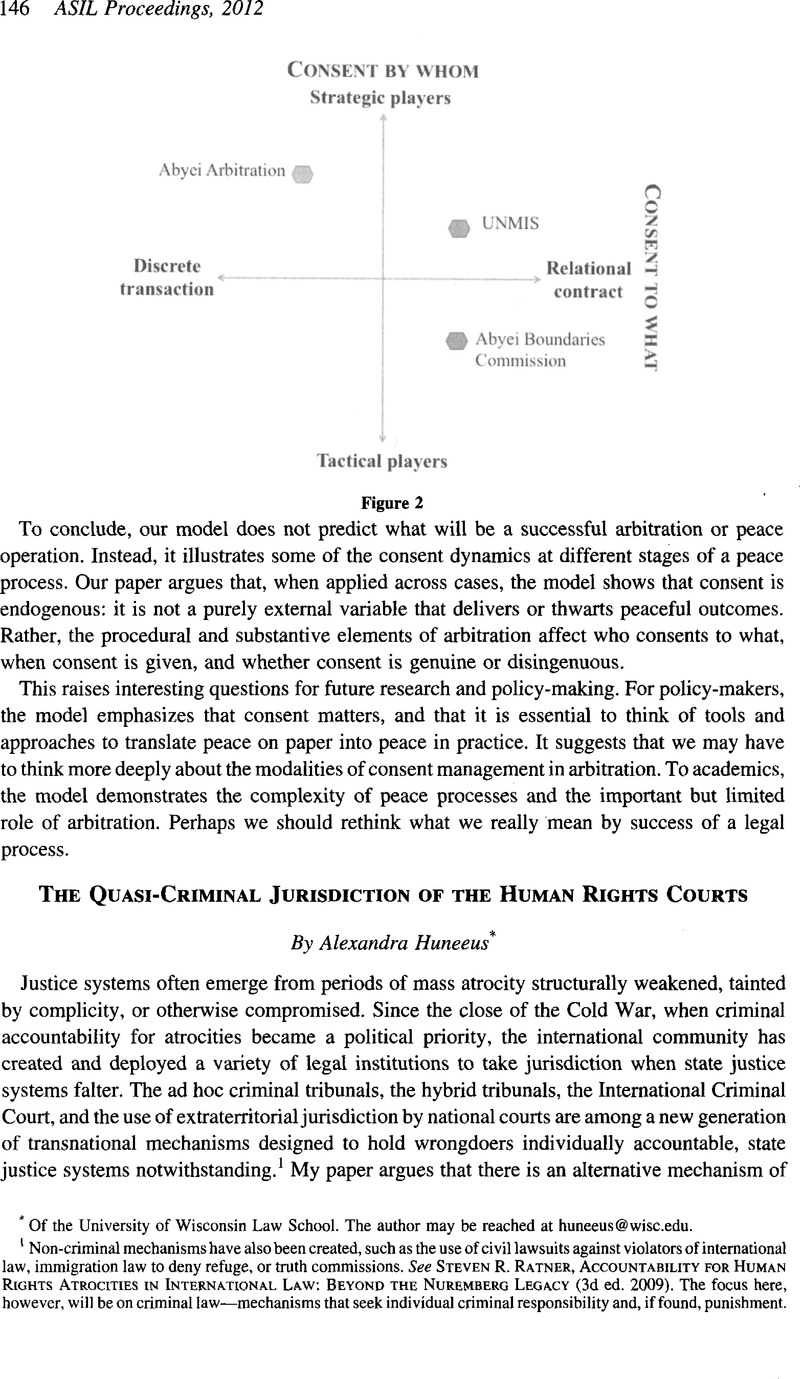Article contents
The Quasi-Criminal Jurisdiction of the Human Rights Courts
Published online by Cambridge University Press: 28 February 2017
Abstract

- Type
- New Voices II: Bringing International Law Home: Clarifying the Complex Relationship Between International Norms and Domestic Change
- Information
- Copyright
- Copyright © American Society of International Law 2012
References
1 Non-criminal mechanisms have also been created, such as the use of civil lawsuits against violators of international law, immigration law to deny refuge, or truth commissions. See Ratner, Steven R., Accountability for Human Rights Atrocities in International Law. Beyond the Nuremberg Legacy (3d ed. 2009)Google Scholar. The focus here, however, will be on criminal law—mechanisms that seek individual criminal responsibility and, if found, punishment.
2 Unless otherwise stated, The data used in this article are drawn from original coding of the Inter-American Court’s rulings and compliance reports, found on the Court’s website at http://www.corteidh.or.cr/ (last visited Apr. 23, 2012).
3 The comparison is included here to stimulate the reader to take seriously the connections the paper draws, but with acknowledgement of the incommensurability of the different types of courts. For information on the ICC’s convictions, see the ICC’s official website, http://www.icc-cpi.int/Menus/ICC/Situations+and+Cases/. For information on the ICTY’s convictions, see the ICTY’s official website, at http://www.icty.Org/action/cases/4.
4 The Inter-American Court’s budget for 2010 was Us$1,919,500.00 or 2.12% of the OAS budget. It also received donations of roughly $360,000. Rep. Inter-Am. Ct. H.R. 2009 at 20-21, available at http://www.corteidh.or.cr/docs/informes/eng_2009.pdf. For the ICC budget, see Ninth Session Report of the Assembly of the States Parties to the Rome Statute of the International Criminal Court, available at: http://www.icc-cpi.int/iccdocs/asp_docs/ASP9/OR/ICC-ASP-9-20-Vol.II-Part.A-ENG.pdf. For the ICTY budget, see The Cost of Justice, http://www.icty.org/sid/325 (last visited Sept. 22, 2011).
- 1
- Cited by




